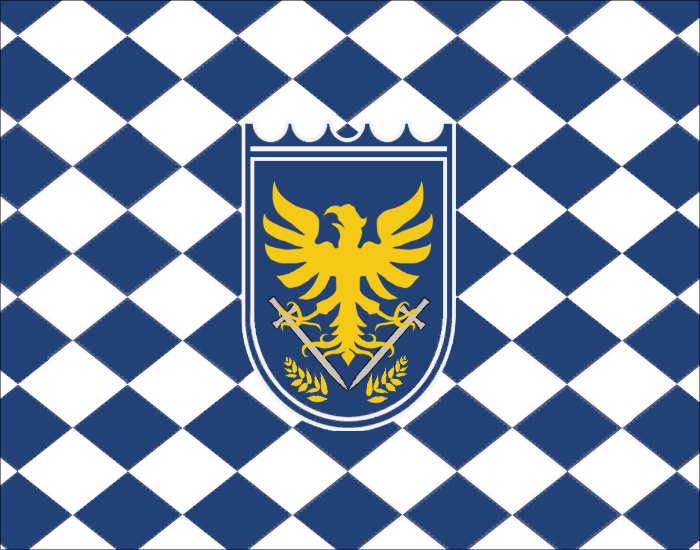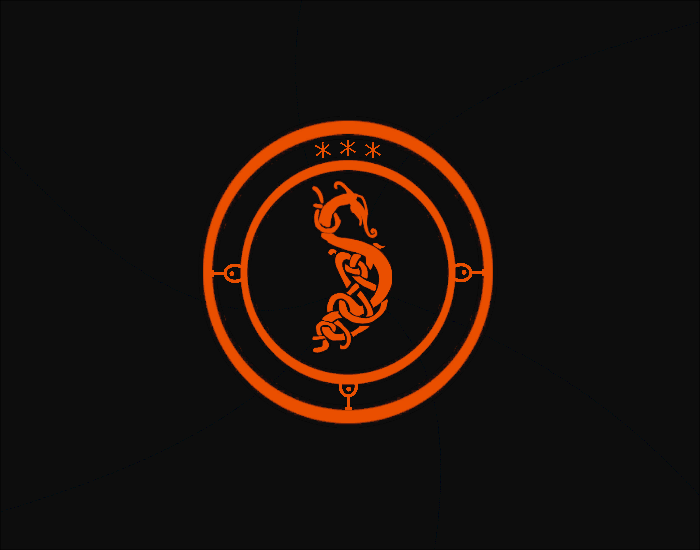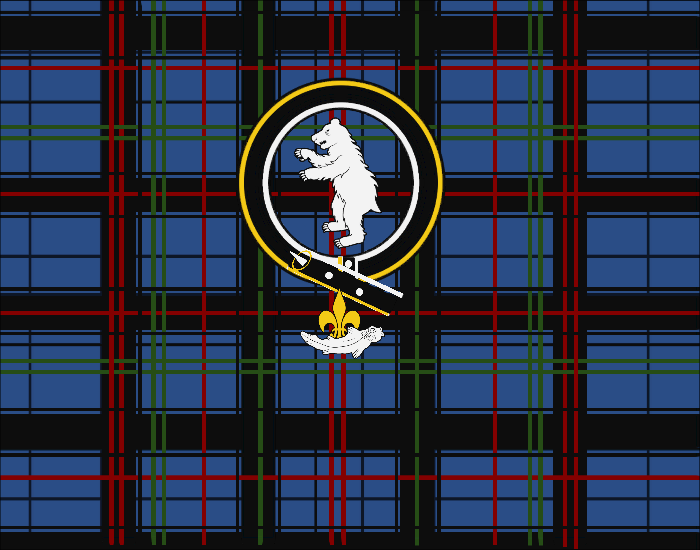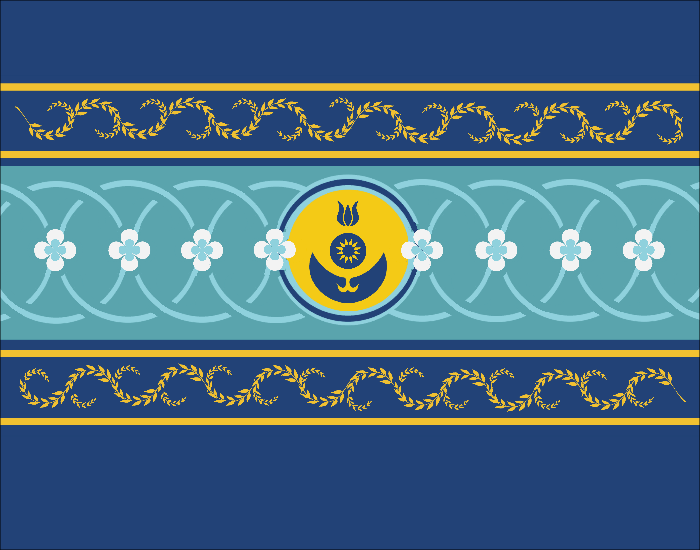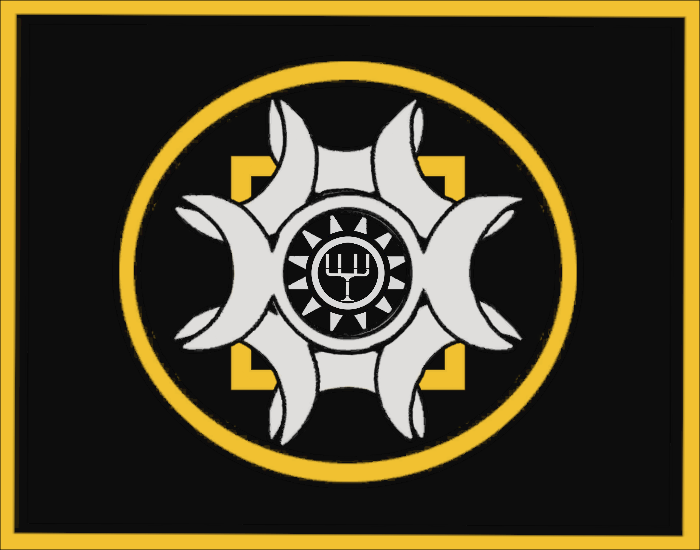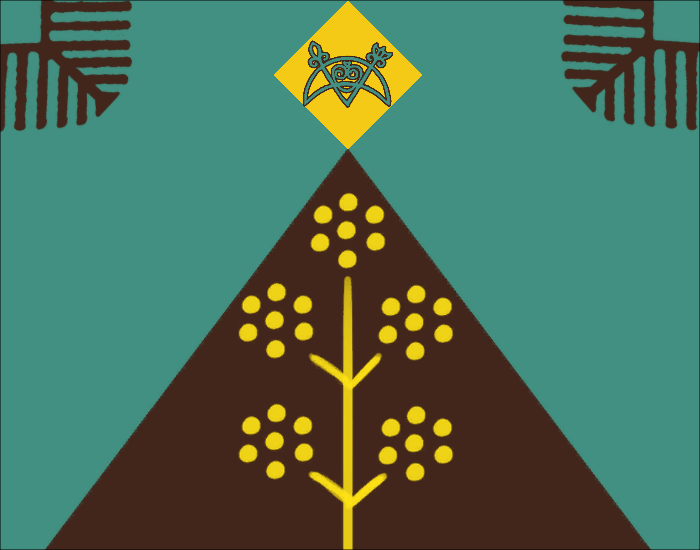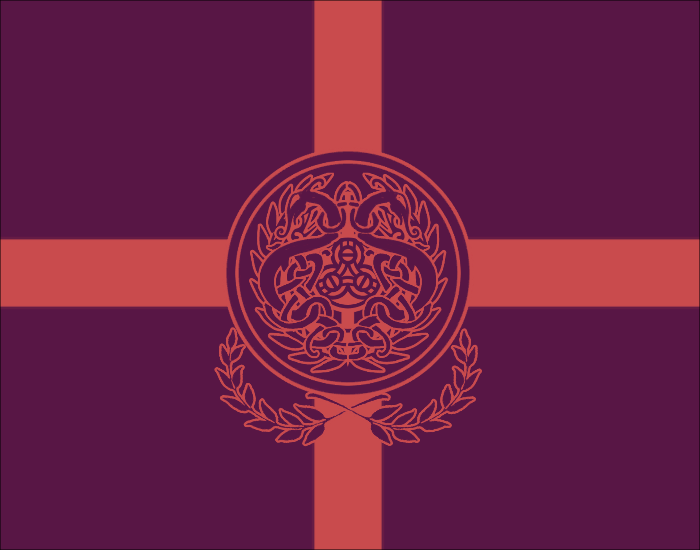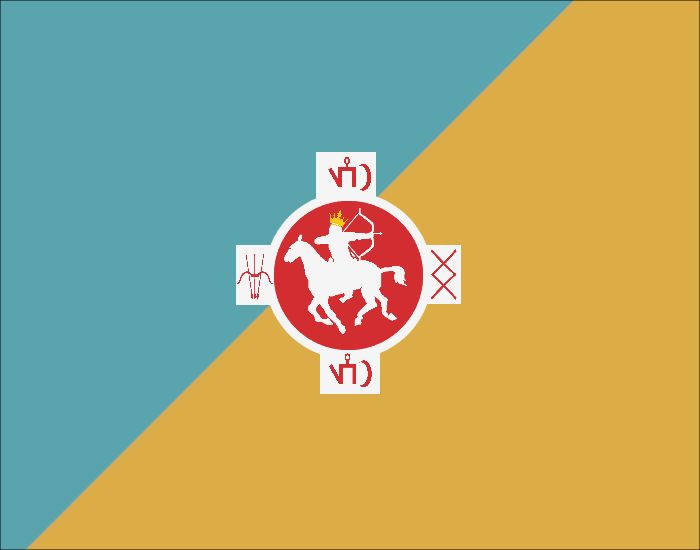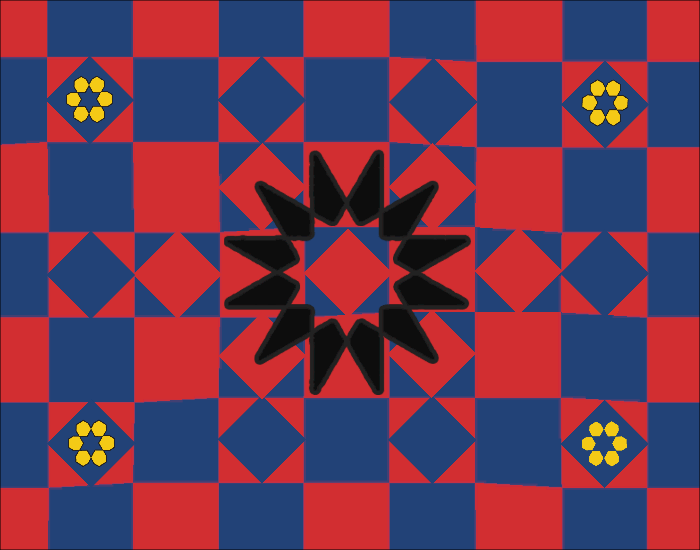The deities ascend to the Outer Planes, from upon a rift opened over Lone Peak Mountain. The age of dragons and mortals begins.

History of Eashavar (Imperial Timeline)
The Imperial Calendar designates the beginning date of the Age of Destruction, the first age in which reliably-dated documents written by the Gults of the Protectorate-Commonwealth can be deciphered, as year 1000. It thus imposes a millenium for the preceding Age of Blood, though such a short time span is preposterous. Negative years are typically introduced to address this discrepency. The core issue underlying this system is that the first ages persisted since the beginning of eternity, and thus a delineation for their end (and the Age of Blood's beginning) is impossible.
The Age of Blood
-
Eternity Ends
Ascension
Celestial -
Circa -600
The Great Migration
Population Migration / Travel -
Circa -200
Founding of Delos'Nordan
Founding -
Circa -200
Hirsid River Civilization Thrives
Cultural event -
Circa -200 to Circa 400
The Wyrm-Hunt
CelestialThe Wyrm-Hunt spanned the length of the Age of Blood, when the High Elves took on the role of hunting dragons, believing it to be their deities' will to extinct the creatures.
-
Circa -200
Rise of Althraxia
Political eventAlthraxia achieves a meteoric rise as it subjugates the tribes of the Savirree River Valley.
-
Dated to -22
Norskolt Colonize Barisea
Discovery, Exploration -
-4
Rise of Al-Merak
Religious event -
0
Emergence of Gultic Writings
Linguistic EvolutionThe first writings of the Gults emerge, denoting the first official year of the Imperial Timeline.
-
1
712
Bach'thal's Breeding
Life, Organisation AssociationThe black drake Bach'thal is said to create a series of alliances, binding the other dragonflights underneath his command in an attempt to defeat the fledgeling mortal races.
-
3
The Wyrms Pierce the Bastion
Disaster / DestructionThe Red Dragonflight, under the parriarch Kaszastrix, breaks through the mountains surrounding the Althraxian Empire. Conflict immediately erupts, leading to Althraxia's first collapse.
-
4
758
The Dragon Wars
Life, DeathThe Althraxian Empire is beset by the dragonflights and sweeped into war. The war causes an immediate crisis as Kaszastrix struck down Emperor Petros II, who had no successors.
-
7
52
Fall of Althraxia
ExtinctionThe Althraxian Empire began to have troubles shortly after its expansion into Sylla and the Savirree River Valley, but these troubles bubble over with the onset of The Dragon Wars and the death of Emperor Petros II without a successor.
-
21
Paradise Found
Expedition -
26
950
The Dark March
Population Migration / TravelThe Dark March begins, marking an exodus of so-called "Dark" Elves from Delos'Nordan to Farenai.
-
43
502
The Devil's Treason
Life, Organisation AssociationXalgumath aligns himself with Bach'thal in a shaky alliance. His Tieflings will fight in the armies of Kaszastrix.
-
56
Vassalhood of Decia
Diplomatic action -
57
Crown of Pearls
Life, CareerThe first emperor of Kai'Rin is crowned, marking a period of centuries of isolation and tranquility for the nation.
-
58
1223
The Freijäger Uprisings
RevolutionThe Freijäger Uprisings begin in The Forsmarch as a result of the prevalence of its mercenary military structure.
-
Circa 60 - Ongoing
The Waves of Woe
Cultural eventLegends and poetry about the Waves of Woe and the Violet Dragonflight first appear in Kai'Rin.
-
62
1226
The Gultic Conflicts
RevolutionThe Gultic Conflicts mark an extended period of rivalry and war between the modern-day protectorates of The Protectorate-Commonwealth as well as city-states of The Forsmarch.
-
94
96
The Fortress Withstands
Construction beginning/endMartin the Subjugator slays the great drake generals of the dragonflights and drives the wyrms out of the Savirree Valley with the powers of Haldun-Kur.
-
96
504
The Thousand Years
Life, CareerMartin the Subjugator becomes Demagogue of Althraxia following his victory in The Dragon Wars and the continued infighting amongst nobles, none of which could fully claim the mantle of Emperor.
-
98
522
Stabilization of the Savirree
Cultural eventAlthraxia regains control of the Savirree River Valley, abandoning its claims over Sylla.
-
104
105
The Little War
Military actionThe Little War was a conflict between Althraxia and Sylla over the modern-day Althraxian province known as the Northern Front.
-
125
129
The Veddehjaldr
MarriageThe Uggrfyolth of Venfros enter open conflict with the Norskolt settlers of Aedenhal. Conflict is ended by marriage between King Aeden the Eternal and The Ice Queen.
-
127
Dawn of the Greyhail
Metaphysical / Paranormal event -
172
Independence of Decia
FoundingFollowing diplomatic pressure from newly-reunited Althraxia, Decia achieves independence from Sylla without a war or military struggle.
-
228
The Tsung-Tsi Blossoming
Linguistic EvolutionThe origins of writing on Kai'Rin are shrouded in some mystery, though the first of them can be traced back to around the start of the 3rd century, often referred to as the "Tsung-Tsi Blossoming" or the "Kai'Rinese Explosion," for writing came from non-existent to pervasive.
-
255
Vestali Statehood
FoundingThe nation of Vestal, previously a loose confederation of matriarchal clans, was unified under the Queen-Mother Kora I.
-
288
The Strand Jingles
Financial EventThe Strand's western-most cities began to coalesce around this time as a result of the desert's trade with the Kcalsbury Continent. The eastern half would lag behind until the High Elves Enter Arberia.
-
356
Kandesh Rises
Population Migration / TravelHuman settlements began to appear in Kandesh as a result of lucrative trade with The Rainy Country. As a result of Vestali Statehood and aggression which followed, diplomatic ties between future-Kandeshi villages were tightened into a loose confederation which is considered to be the origin of the Kandeshi state.
-
387
390
The Kandesh-Vestal War
Military: WarFollowing decades of border skirmishes, the confederation of towns within Kandesh join together in a formal war against Vestal. The peace that follows establishes formal borders between the two nations, and leads to the crowning of Kandesh's first Pharash. His family will govern Kandesh until The Kandesh Division.
-
394
The Settler Spillway
ExpeditionFollowing the creation of Kandesh after The Kandesh-Vestal War, a sense of national pride swelled up amongst its peoples. This pride led them to accept an identity not just as traders taking up residence in an unsettled land, but rather as Kandeshis. A settler sentiment followed, and Kandeshis flooded into the modern regions of Ahru, establishing communities there.
-
457
533
The First Expansion
Political eventThe First Expansion refers to Delos'Nordan's first annexations of land, namely the territories of the Myds and Cyrs, and as far south as Everaldimor.
-
481
546
Tvinndreki Struggle
Disaster / DestructionThe Tvinndreki Struggle refers to the arrival of Yrvolth and Tyrrleigh to Aedenhal, and the battles that ensued.
-
482
1326
Client of Ganemyth
Diplomatic actionAfter decades of attempts by Delos'Nordan to unify the Myddish tribes, the first human Client of the nation was born: Ganemyth.
-
495
746
The Kingsbane Drake Returns
Disaster / Destruction -
522
744
The Decay of the Thousand
Extinction -
533
1326
Client of Ciraeldon
Diplomatic actionFollowing success in Ganemyth, Delos'Nordan unified many Cyrs to craft the state of Ciraeldon.
-
537
555
The Twin-Drakes Move South
Disaster / DestructionFollowing a clear defeat in the Tvinndreki Struggle, the twin-drakes Yrvolth and Tyrrleigh flew south to Vestal with their flight (but without the Centaurs that served them). Here, they wreaked havoc before the intervention of Aedenhal to aid its neighbors.
-
540
740
The Reckoning
Disaster / Destruction
The Age of Destruction
-
540
740
The Reckoning
Disaster / Destruction -
552
555
Northern Kinship
Cultural eventUnder the request of Aedenhal, Venfros sends the Jezis southward to Vestal to help them defeat the twin-drakes Yrvolth and Tyrrleigh.
-
567
Misery Man, First Sighting
Metaphysical / Paranormal eventThe first reported sighting of the Misery Man on Kai'Rin is reported.
-
576
676
Century of the First Lich
Metaphysical / Paranormal event -
591
594
The War of the Sword
Military: WarA series of battles are fought by members of the contemporary Protectorate-Commonwealth, the Althraxian Empire, and potentially factions within the West Marches (sometimes attributed to Baudilay) over the enchanted blade Haldun-Kur.
-
602
603
Aeden Crosses Into Vestal
Military actionThe forces of Aedenhal cross the Telly River's northern arm east into parts of the Grey Woods.
-
602
604
Rise of the Long-Living King
Diplomatic actionKing Devan I rises to power in Devania, unifying its lands with the military aid of the High Elves of Delos'Nordan.
-
603
The Vestal-Venfros Affair
DisbandmentThe Vestal-Venfros Affair was a scandal in Aedenhal, a consequence of the occupation of parts of Vestal by King Aeden.
-
604
Integration of Devania
FoundingThe lands of the Kingdom of Devania are officially integrated into one whole under King Devan I, as a Vassal-Kingdom of Delos'Nordan, following the Rise of the Long-Living King.
-
606
High Elves Enter Arberia
Population Migration / TravelThe first official expeditions of Delos'Nordan into Arberia began after the subjugation of Devania. Most did not return, later becoming the Desert Elves.
-
662
First Assembly of the Dal'morai
Gathering / ConferenceThe Dal'morai are founded, following an assembly of the Druidic patriarchs and matriarchs which had surfaced as the patrons of the Everaldimor jungles.
-
688
714
Misery Man, Reign of Terror
Life, SupernaturalThe Misery Man begins various attacks through Kai'Rin, raising an army of undead which will ravage the countryside for decades to come, until he is sealed in the Amethyst Chamber.
-
702
946
The Strife
ExtinctionThe Strife spanned the majority of the Age of Destruction, but refers specifically to the horrific struggles and wars that faced the peoples of Delos'Nordan and Pharos.
-
712
Final-Fall
CelestialBach'thal vanishes, as Delos'Nordan regains the upper hand in the war against his flights.
-
714
738
The Silver War
Life, DeathThe allegiance between Amros and Delos'Nordan collapses after the Final-Fall, and the Silver Dragonflight is almost eradicated. Amros himself vanishes.
-
738
740
Silver to Songs
Disaster / DestructionThe Silver Dragonflight flees to the Sea of Songs after suffering a defeat in The Silver War.
-
740
822
The Second Expansion
Diplomatic actionThe Second Expansion was defined by Delos'Nordan's thrust into Southmoor, Rhydien, and Montbay.
The Age of Creation
-
738
740
Silver to Songs
Disaster / DestructionThe Silver Dragonflight flees to the Sea of Songs after suffering a defeat in The Silver War.
-
740
822
The Second Expansion
Diplomatic actionThe Second Expansion was defined by Delos'Nordan's thrust into Southmoor, Rhydien, and Montbay.
-
741
846
The Hillside Campaign
Military actionThe Hillside Campaign encompassed several failed attempts by the High Elves of Delos'Nordan to unify and vassalize the lands of human Old Faith tribes
-
741
The Herd Brays Westward
Population Migration / TravelThe largest migration of Beast-Hordes occurred during the Age of Destruction, as they fled westward from Pharos and rampaged across the Kcalsbury Continent, until eventually reaching The West Marches, in which they were contained.
-
742
980
Nomadic Migration
Population Migration / TravelNomads from the Arberian desert begin to migrate towards the Kcalsbury Continent as a result of pressure from the fleeing Beast-Horde races.
-
746
758
The Flights Turn Away
Metaphysical / Paranormal event -
750
969
The Dal War
Military: SkirmishThe Dal War represented the tension which arose as the influence of the Dal'morai grew to overshadow that of Delos'Nordan within Everaldimor.
-
757
The Second Kandeshi Migration
Population Migration / TravelThe Nomadic Migration led to a new influx of Uzbari immigrants to Kandesh. Though their integration was largely peaceful and supported due to their shared origins in Arberia, raids by fellow Uzbari from The Horse-Lord Lands will cause tension over time.
-
762
833
Era of the Three Republics
Cultural eventThe three republics of Althraxia, Orthetia, and Coszabea arise in the ruins of the Althraxian Empire.
-
776
The Open War Begins
Military: War -
828
Beginning of the West March Wars
Disaster / Destruction -
829
856
The First West March War
Military: WarThe Beast-Horde races invade the Three Republics of Althraxia, decimating their military and extending as far as Howyth before retreating back to the West Marches.
-
831
The Western Exodus
Population Migration / TravelThe Western Exodus, usually just referred to as "the exodus," since it is the most famous mass migration of peoples, occurred as a result of the West March Wars, which saw parts of the Kcalsbury Continent invaded by hordes of the violent Thalgor.
-
832
Aedenhal Closes Its Borders
Political eventThe kingdom of Aedenhal officially closes its borders and refuses to accept any refugees as masses of Gults and other peoples flee from the West March Wars.
-
833
The Althraxian Collapse
ExtinctionThe Era of the Three Republics had started with the promise of peace for Althraxia, but the situation rapidly decayed as the disparate republics sought greater autonomy and independence and the Beast-Hordes rampaged through.
-
834
The Jezi Break Away
DisbandmentThe Jezi, after a period of increased political disagreement between Aedenhal and Venfros, are withdrawn from the Aedenhalian military.
-
835
Vestal Begins Integration Programme
Political eventFollowing an influx of refugees from the southern continent due to the West March Wars, and suffering from border raids by the Uzbari, Vestal adopts a policy of openly accepting refugees. These refugees are settled in racial enclaves at the Vestali borders and come to serve as the first line of defense against the Horse-Lords.
-
846
Establishment of Montbay
Diplomatic actionThe kingdom of Montbay is officially established, becoming a vassal-kingdom of Delos'Nordan.
-
890
Independence of Montbay
DisbandmentJust a few decades after its founding, the nation of Montbay declared total independence from Delos'Nordan.
-
892
Settlement of Lasthold
FoundingFollowing decades of war with the Horse-Lords, Kcalsburian refugees carved out their own stretch of land, which today encompasses Lasthold. The first official permanent settlements in Lasthold began appearing much earlier, with the exact date being unknown.
-
900
1100
Hirsid Golden Age
Scientific achievementThe Hirsid Golden Age saw the prosperity of philosophy, science, and magic within the floodplains of the Hirsid River in Arberia.
-
902
The Kandeshi Fey Migration
Population Migration / TravelFey begin to migrate from the Rainy Country to Kandesh in high numbers, bringing luxury goods and trade and a curiosity for the greater world. They are primarily diverted to settle in Ahru, where Kandeshi settlements have always had a stagnant growth ever since the first patriotic tide of settlement ended.
-
904
The Devanian Request
Diplomatic actionTaking the example of Montbay, Devania began to work towards its own independence from Delos'Nordan.
-
914
923
The Wars of Dual Statehood
Military actionThe Wars of Dual Statehood occurred during and after the exodus of Kcalsburian humans eastward. They took place in and around modern Farholm and Norholm, and resulted in the creation of their borders as they stand today.
-
916
The Skammrskilja
Disaster / DestructionFollowing a period of increased tensions and disagreements between The Ice Queen and King Aeden the Eternal, the personal union between Venfros and Aedenhal was almost dissolved when the newly-crowned Queen refused to participate in the marriage ceremony. This "brief divorce," or skammrskilja, was averted by the defeat and replacement of King Aeden at the last minute, leading to concessions by Aedenhal and the mending of ties within the union - including a successful wedding.
-
923
Holmlands Established
Founding -
924
930
The War for Imperial Withdrawal
Military: WarFollowing the creation of the states of Norholm and Farholm, supporting troops from The Protectorate-Commonwealth remained within their borders. Hostilities sparked mere months later due to their pressure, and a new war soon broke out, much smaller in scale, but equally significant to the fledgling nations.
-
926
Emerald Declaration
Disbandment -
942
Orthetian Dissolution
Military actionAlthraxia annexed, once again, the northern region of Orthetia, which encompasses modern-day Erthania.
-
944
The Obsidian Doctrine
DisbandmentThe Obsidian Doctrine was the declaration of policy of Farenai, which included independence from Delos'Nordan, echoing the words of the Emerald Declaration.
-
946
969
The First Elven War
Military: WarWith the subjugation of the dragons and the disappearance of the Silver Flight, Delos'Nordan looked to regain its lost lands on the continent of Pharos. This brought it into conflict with the Dark Elf exiles in Farenai, as well as the Forest Elves of Everaldimor. Minor participants dragged into the conflict included Devania, who had historically been treated as a vassal state, Montbay, and the Desert Elves of Arberia.
-
969
Elven Independence Day
Cultural eventThe First Elven War officially concluded, and Delos'Nordan granted independence to Everaldimor, Farenai, and Devania, while also relinquishing all claims to Arberia.
The Age of War
-
969
Elven Independence Day
Cultural eventThe First Elven War officially concluded, and Delos'Nordan granted independence to Everaldimor, Farenai, and Devania, while also relinquishing all claims to Arberia.
-
985
1022
The Lone War
Military: War -
985
1028
The Minstrel's Revolt
Diplomatic action -
1041
1121
The Second Elven War
Military: WarConflict erupts intermittently on Pharos, where borders are ill-defined and the High Elves attempt to reclaim their "homeland." This period becomes known as the Second Elven War.
-
1047
Declaration of the Fyran Republic
FoundingFyra separates from Coszabea in a largely peaceful manner, as the region had long had great autonomy and been heavily influenced by The Protectorate-Commonwealth.
-
1048
Disunion of Coszabea
DisbandmentFollowing the secession of Fyra, the nation of Coszabea dissolved itself, "evolving" into the modern state of Cadisia instead. This marked the beginning of the end of warfare in the Savirree River Valley.
-
1070
Fyran Economic Miracle
Financial EventFollowing the independence of Fyra, the nation experienced an economic revolution that dramatically increased its standard of living and access to luxuries. This was largely as a result of few trade restrictions, minimal tariffs, and the lack of an entrenched noble class which permitted merchants to thrive.
-
1102
Birth of the Sisters
ExpeditionThe Birth of the Sisters refers to the annexation of New Nor and Nauten by the Norrish people in the late Age of Enlightenment.
-
1107
The Crestfall Dominion
Political eventThe Crestfall Dominion is the term for the ascension Speaker Rodger Crestfall to near-absolute power in Lasthold.
-
1121
The Great Concession
DisbandmentAs per the agreements of the Second Elven War, Delos'Nordan formally ceded the regions of Upmarch, Lowmarch, and The Feral Lands as demilitarized zones.
-
1123
1339
Upmer Decline
Disaster / DestructionFollowing the patriation of the Upmarch at the conclusion of The Second Elven War, regional stability largely collapsed.
-
1128
1480
The Karaval War
Military: SkirmishThe King-of-Kings of Arberia begins funding the Karavali tribesmen of the south to resist colonial efforts upon his nation. The Karavali turned towards insurgency against colonialists and the Arberian government when this funding and support was later cut off.
-
1129
The Jungle War
Military: SkirmishThe Jungle War begins, following trespassed by Delos'Nordan into The Feral Lands, whose Spirit Elves were supported by Everaldimor.
-
1149
Vesamir Rising
CelestialThe Celestial Dragon Vesamir comes to rule over Adaetha, under historically contentious circumstances.
-
1152
Erthanian Uprising
RevolutionOrthetians rose up again and repelled Althraxian armies, almost re-annexing Adaetha before another Beast-Horde invasion decimated the region and forced the signature of a peace. In the end, Orthetia gained its independence, becoming the modern nation of Erthania.
-
1189
The Muses Succession
Political eventThe Muse-Speakers and the Cult of the Celestial Dragon are handed authority over the kingdom of Adaetha.
-
1226
Confederation of the Protectorates
Gathering / ConferenceThe disparate nations and city-states in the south-eastern Kcalsbury Continent agree to form a confederation, founding the nation today known as the Protectorate-Commonwealth
The Age of Enlightenment
-
1226
Confederation of the Protectorates
Gathering / ConferenceThe disparate nations and city-states in the south-eastern Kcalsbury Continent agree to form a confederation, founding the nation today known as the Protectorate-Commonwealth
-
1228
1233
The Forswar
Military: WarThe Forswar, sometimes spelled the Fors War, was a series of conflict between the newly-unified Protectorate-Commonwealth and the city-states of The Forsmarch.
-
1238
End of the West March Wars
Diplomatic actionWith the Confederation of the Protectorates, the West March Wars largely come to an end, as the unified confederation extends its military protection over the Border Kingdoms.
-
1248
The Red Riot
Civil actionUnrest erupted in Trinea, then-owned by Vestal but with a significant Tiefling minority, flared as a result of the nation's so-called Indebtitude law.
-
1296
The Exodus Reaches Pharos
Population Migration / Travel -
1297
Convention on the Refugees
Gathering / ConferenceThe Convention on the Refugees was held between Devania, Montbay, and Everaldimor in response to the influx of refugees from the Kcalsburian Continent.
-
1298
The Rhyders Protest
Military: Skirmish -
1303
Founding of Nothgard
FoundingNothgard is officially founded as a Kcalsburian state. Its peoples intermix with native Pharosians and integrate or subjugate the native tribes, resulting in a unique blend of cultures.
-
1303
Settlement of Southmoor
Population Migration / TravelKcalsburian refugees begin to flood into Southmoor. At first, they coexisted peacefully with the natives, and largely established their villages far from their ancestral lands. Tensions began to rise soon after, when the settlers began attempts to form a state.
-
1304
1326
The Third Elven War
Military: WarThe Third Elven War broke out as a result of migrations from the Kcalsbury Continent. A mass influx of humans destabilized the establishing order on Pharos, and threatened to permanently prevent the High Elves from reclaiming their ancestral lands.
-
1306
1346
Trinean Liberty War
RevolutionTieflings rose up in the region of eastern Vestal today known as Trinea, seeking independence and the institution of a Tiefling state. Vestal, supported by Kandesh (now Eowyr and Ahru) and the The Horse-Lord Lands, was summarily defeated after a prolonged offensive, ravaged by the intervention of Aedenhal in a distinct conflict known as The Northern War.
-
1319
1405
The Northern Wars
Military: WarThe Northern War was actually a series of wars between Aedenhal and a combined coalition of Vestal and Kandesh, as well as Horse-Lords predominantly occupying the modern region of Zaral.
-
1320
1340
The Syllan Civil War
Disaster / DestructionThe Syllan Civil War, sometimes known as the Syllan Troubles, was a time of great tension between the nobles of the former kingdom of Sylla and their peasantry.
-
1326
Conclusion of the Elven Wars
Diplomatic action -
1328
Establishment of Southmoor
Founding -
1330
The Violet Peace
Gathering / ConferenceThe Violet Peace saw the signature of a multinational treaty binding most of the nations of Pharos in a defensive coalition against Delos'Nordan. Today, its members are said to be in the Violet Coalition.
-
1339
The Sapphire Sparkles
Cultural eventUpmarch begins to stabilize and grow in prosperity under the influence of the Sapphire Concordat.
-
1341
The Panic
Metaphysical / Paranormal eventThe Panic marked the beginning of the end of The Syllan Troubles, as the creature Bellus Vrakis offered immortality and peace to the embattled Syllan nobles, who were largely eager to take up the deal. Within the span of mere weeks, the majority of the Syllan nobility defected from their efforts to hold their lands and pledged fealty to Lord Dragomir, causing the functional collapse of the Syllan state and military.
-
1342
Nesia1368
The Culling Wars
Military: WarThe Culling Wars were a short conflict between necromancer-ruled Sylla and its neighbors, primarily The Protectorate-Commonwealth, Decia, and Althraxia.
-
1343
The Powder Triangle
Financial EventThe Powder Triangle is an informal name for the trade treaty and alliance between Barisea, Kai'Rin, and later Montbay. It is thus named because of it gave the three nations a virtual monopoly on gunpowder, which originated in Kai'Rin, and at one time propelled their mutual technology ahead of other nations.
-
1350
1354
The Rotspur Ravage
Plague / EpidemicRotspur spreads throughout The Protectorate-Commonwealth and the Border Kingdoms, especially Fyra. It soon spreads to Pharos, as well as north on Kcalsbury, due to trade routes. The disease kills millions, paralyzes millions more, and nobody is spared loss.
-
1368
The Dead War
Military: WarThe nations of the southern Kcalsbury Continent, led by The Protectorate-Commonwealth, band together in a declaration of war upon Sylla.
-
1370
A Call to Crusade
Religious eventA world-wide crusade is called against Sylla by the Church of Nes, supported by the clergies of Pyriel, Merak, and the Crimson Aphorites.
-
1382
Firearm Standard Issue
Technological achievementAfter decades of experimentation with blackpowder in practical weaponry (such as tipped javelins and arrows), its propulsive capabilities were implemented in the first firearm, developed by Barisea, and deployed widely to its navy.
-
1396
1456
The Capital War
Financial EventThe Capital War is the name sometimes given to the struggle between members of the Sapphire Concordat to be considered the capital of the Upmarch. It was not a war fought with weapons, but rather with trade. Glen Mischal and Glen Coroval were the primary contenders, and it is widely accepted that Glen Mischal has long won out.
-
1399
Crimson Reprisals
Criminal Activity"Crimson Reprisals" is a general term referring to the blowback by Kandeshi humans against Fey for the Crimson Day. Violence immediately erupted and, almost immediately, Fey were being executed, beaten, and robbed en masse by the angry populace, especially in the north. This violence would only subside when it turned into institutionalized slavery
-
1399
Admiral's Coup
Political eventThe elected government of Barisea is overthrown by a junta of admirals.
-
1399
Crimson Day
RevolutionThe last Pharash of Kandesh, Rashakal III, is publicly executed by a contingent of Fey conscripts in opposition of the Northern Wars. His son is prevented from succeeding the throne by pro-war generals.
-
1400
The Cannon Roars!
Technological achievementFollowing the creation of firearms, the potential of blackpowder for propulsion weaponry entered the world. A stationary firing system could be absorb greater impact and fire at longer range; this idea led to the invention of the cannon by Montbay, and its first military usage by Barisea in The Grand Sea War.
-
1404
1406
The War of Dissolution
Military: WarFollowing the collapse of Kandesh during The Northern War, the kingdom was to be split between its southern- and northern-most regions. A civil war broke out in which northern generals attempted a rapid reconquest to regain control of the state; they ultimately failed, leading to the originally-decided borders at the Muru River. The remnants of the Pharash's bloodline perished in this war.
-
1408
The Shackles Sound
The citizenship of all Fey in Eowyr is formally revoked. It is not replaced by any other legal status, and their legal treatment is effectively reduced to the legal treatment of property. This legitimizes the slave status of Fey which had found themselves in such positions as a result of the Crimson Reprisals, and it greatly expands the enslavement of Fey which had escaped the reprisals, as they are essentially considered "stray cattle." Fey which had yet remained in Eowyr flee in large numbers to Ahru.
-
1414
1432
The Grand Sea War
Military: WarThe Grand Sea War was a primarily-naval military conflict between Barisea and Delos'Nordan. The war is a stunning and unexpected success which is a great embarrassment to Delos'Nordan.
-
1418
Marigold Crisis
Disaster / DestructionThe Marigold Crisis saw the navy of Delos'Nordan mistakenly sink the Marigold, one of the prides of the Fyran merchant navy.
-
1418
1422
The Lost Crusade
ExpeditionThe Grey Company enters Southmoor to restore order to the region in the name of the Blue Duke Varus Dracus Vossen. Their proclaimed crusade was a massive failure which ended when the Company's financial backers were revealed and a minor scandal ensued, earning it the name of "the Lost Crusade."
-
1420
Invention of the Engine
Technological achievement -
1427
Last Crisis of Thrys
FoundingAt the height of The Rotspur Ravage, with seven of its clients campaigning for a normalization of relations with the rest of the world, Delos'Nordan opted for expulsion of the dissenting representatives. This has come to be known as the Last Crisis of Thrys.
-
1428
1431
Raventide Revolt
RevolutionAfter their expulsion from the Council of Thrys, the three clients of Revansgar went into open revolt against Delos'Nordan.
-
1428
1438
The Erith Conflict
Military actionMontbay begins resource exploitation of Erith, long considered a domain of Everaldimor. The status of Erith remains uncertain following a brief period of rising tensions, after which both sides opted to ignore the others' trespasses in the region.
-
1461
The Nobles Revolt
RevolutionThe nobles of Devania revolt against the crown, an important precursor to the devastation of the Devanian Civil War
-
1477
Zaralian Mandate
FoundingThe horse-lords of Yr Zaral had long begun to settle and establish farms, but this process was expedited by First-Khan Gagakh Zaral. The First-Khan willed Yr Zaral to become an independent state - one with industry and prestige that rivaled its neighbors and rose above the world.
-
1478
The Ballad and The Choir
Technological achievementMontbay unveils two experimental ship designs making use of cannon technology, both dubbed the Rocket-Ship.
-
1479
Devanian Civil War
Disaster / DestructionDevania enters a period of turmoil that leads to its total, ongoing collapse.
-
1480
The Sherazi Doctrine
Political eventThe Sherazi Doctrine refers to the doctrine of the contemporary King-of-Kings of Arberia, Delshad Alinejad Sherazi. At this time, he declared the divine and inalienable right of the King-of-Kings to the lands of Arberia, effectively rendering the question of the southern colonies to the spiritual planes.
-
1482
Karaval Insurgency
Military actionThe Karavali turn against Arberia when their support is cut off under The Sherazi Doctrine. Their insurgency spreads to the Strand and some of the Jewel-Cities, but remains concentrated in the south of Arberia.
-
1483
1486
The River War
Military actionThe River War was a border war between Nothgard and Devania, which saw the border of the two nations pushed northward in Nothgard's favor. The Old Devon River delineated the new boundary, and was shared between the two nations, the former of which capitulated quickly because it was already in the depths of its own civil war.
-
1504
The Karsten Crisis
Political eventThe Karsten Crisis sees the election of Emperor Karsten VI of Howyth contested by opponents including Dietmar III von Clausen and Rostag von Helvetia.
The Age of Ruin
-
1504
The Karsten Crisis
Political eventThe Karsten Crisis sees the election of Emperor Karsten VI of Howyth contested by opponents including Dietmar III von Clausen and Rostag von Helvetia.
-
1505
Declaration of the People On the Status of Inalienable Rights
Political eventThe Declaration of the People On the Status of Inalienable Rights was read in Montbay's Peasant's House of the Grey Parliament, calling for the official establishment of dual power with the crown, where the Parliament might act as a separate governing body over Montbay, disregarding the authority of the crown.
-
1513
Revansgar Secedes
Diplomatic actionIn a dramatic declaration, the Client of Revansgar seceded from Delos'Nordan as a result of its "endless focus on wars," and declared itself the "true home of High Elves for a peaceful and cooperative future."
-
1526
The Dragon Churns
Geological / environmental eventThe Dragon's Mountains regularly erupt, though typically the damage is centered within the wide-spanning range, and doesn't affect the peoples beyond it. The mountains are churning once again, and while they still do not pose a reasonable threat, they sound off louder - and nearer - than ever before.








